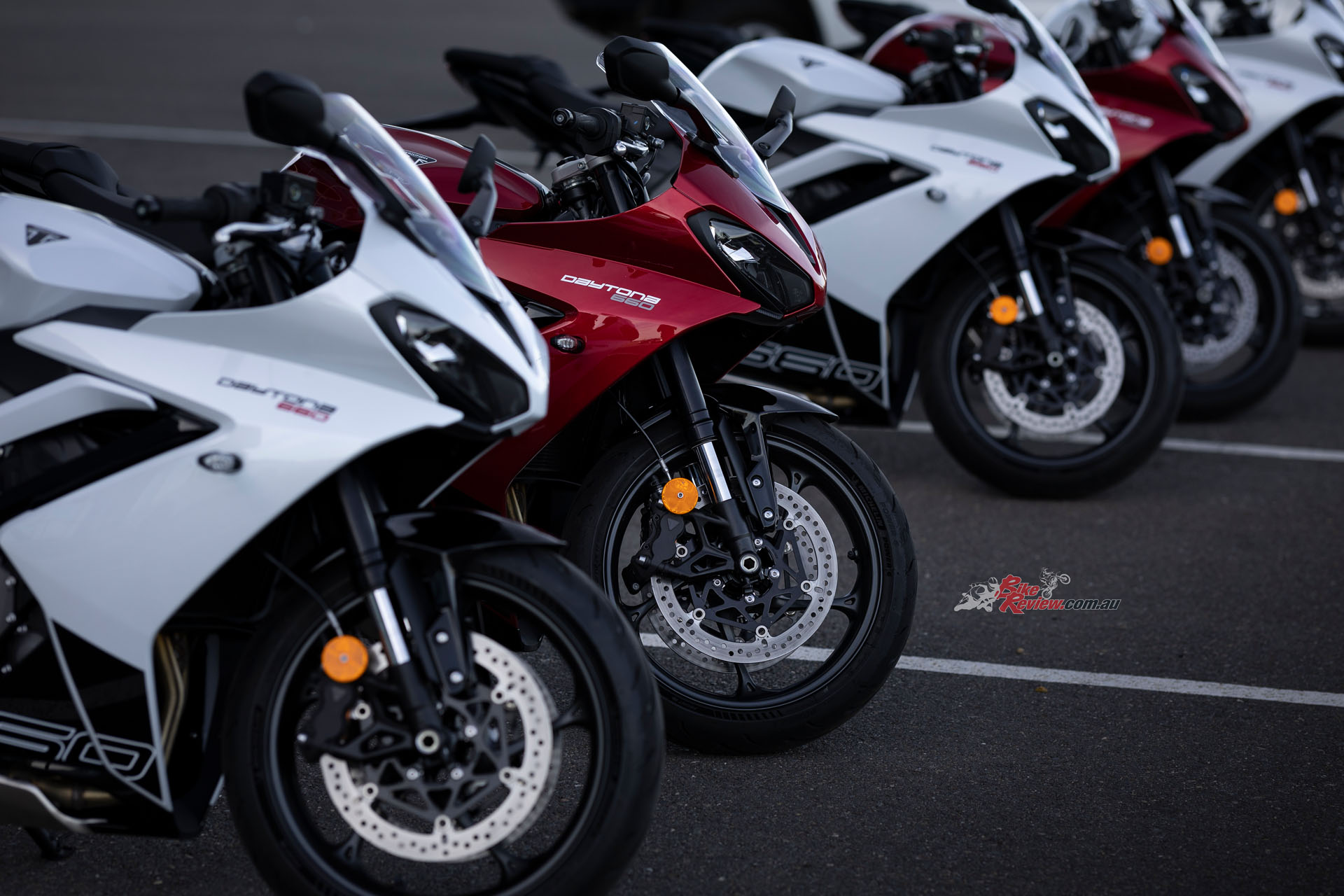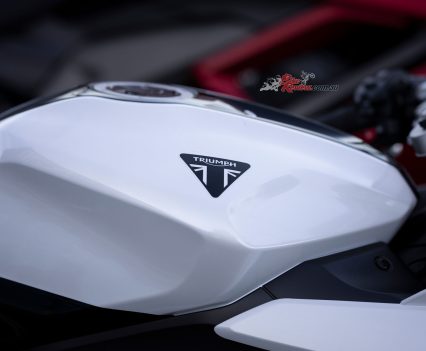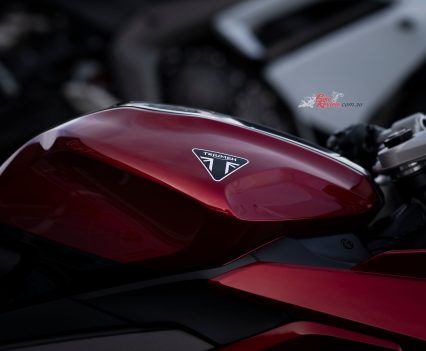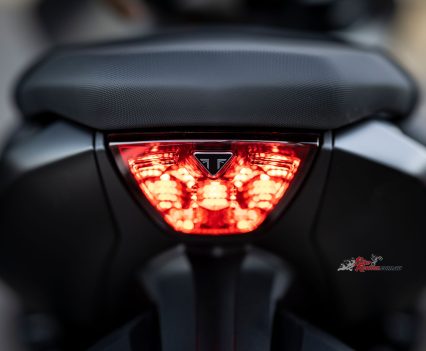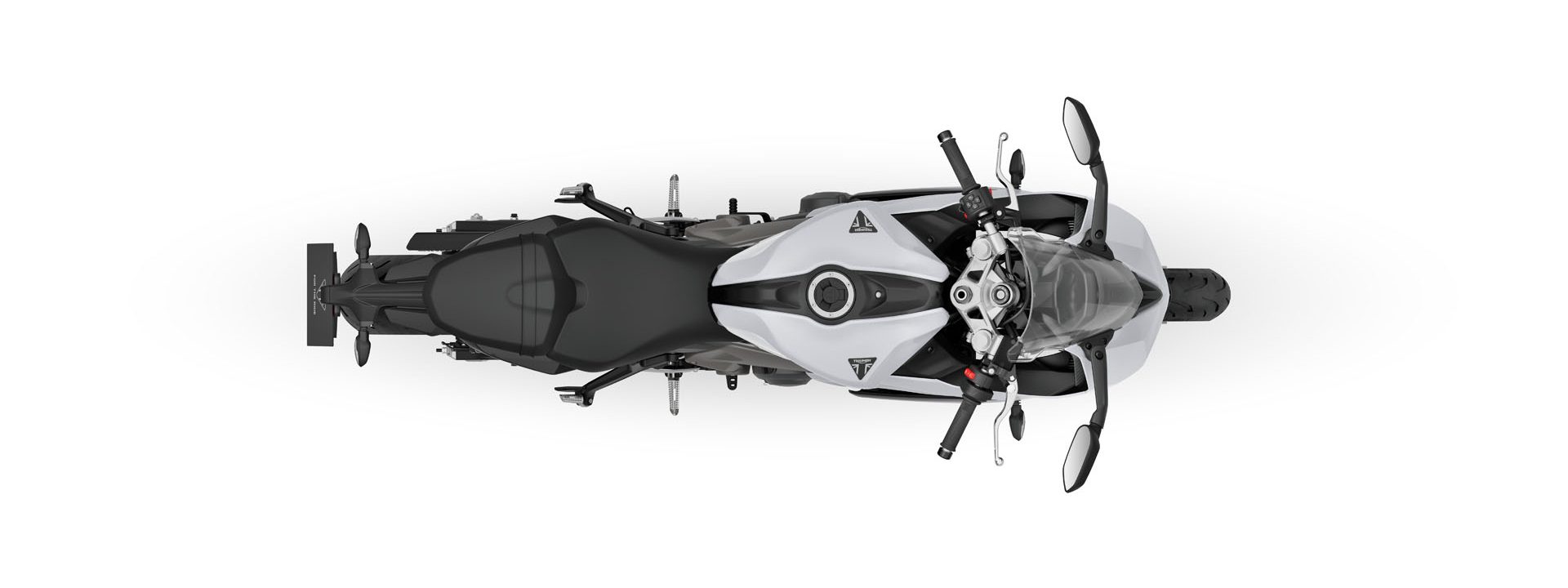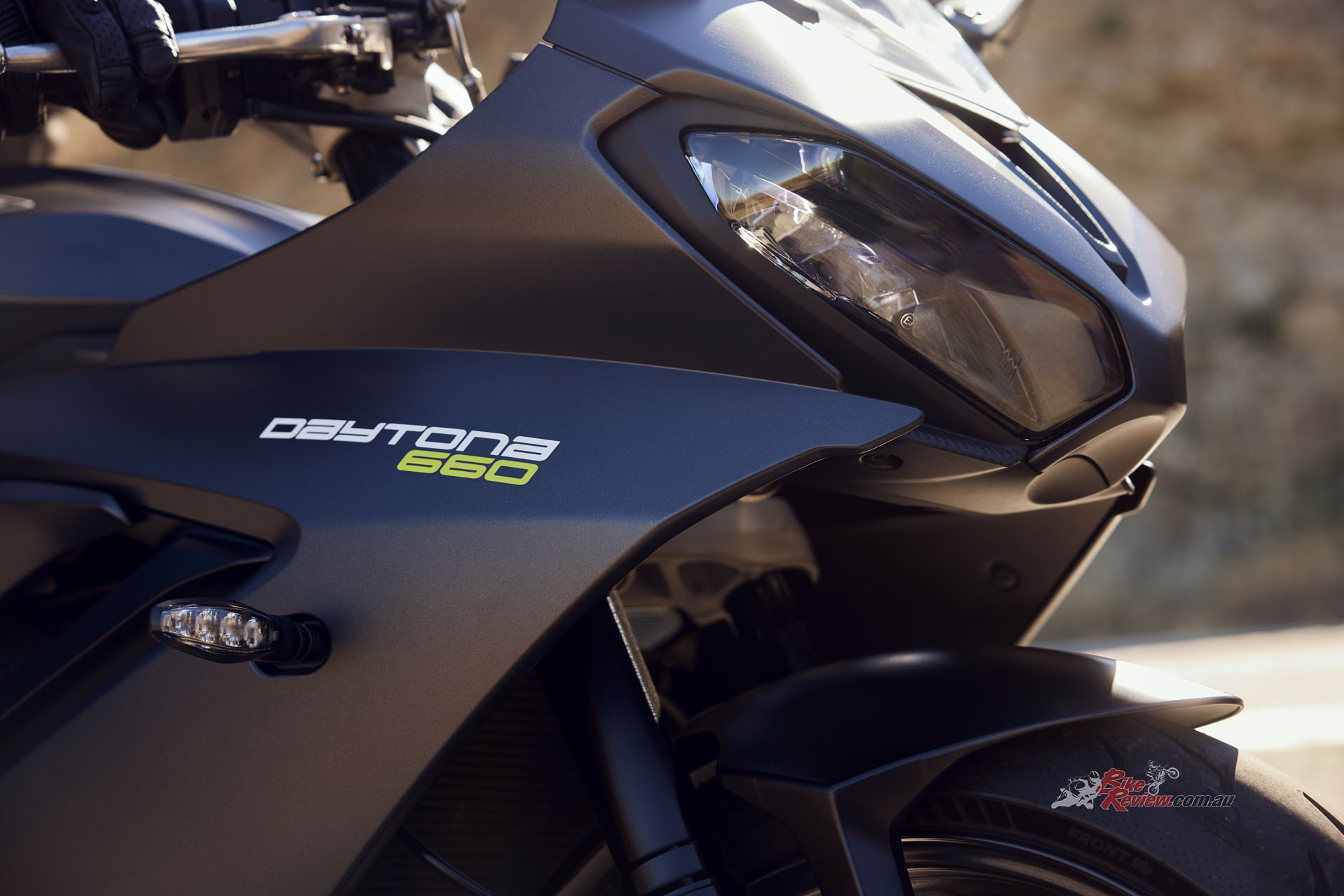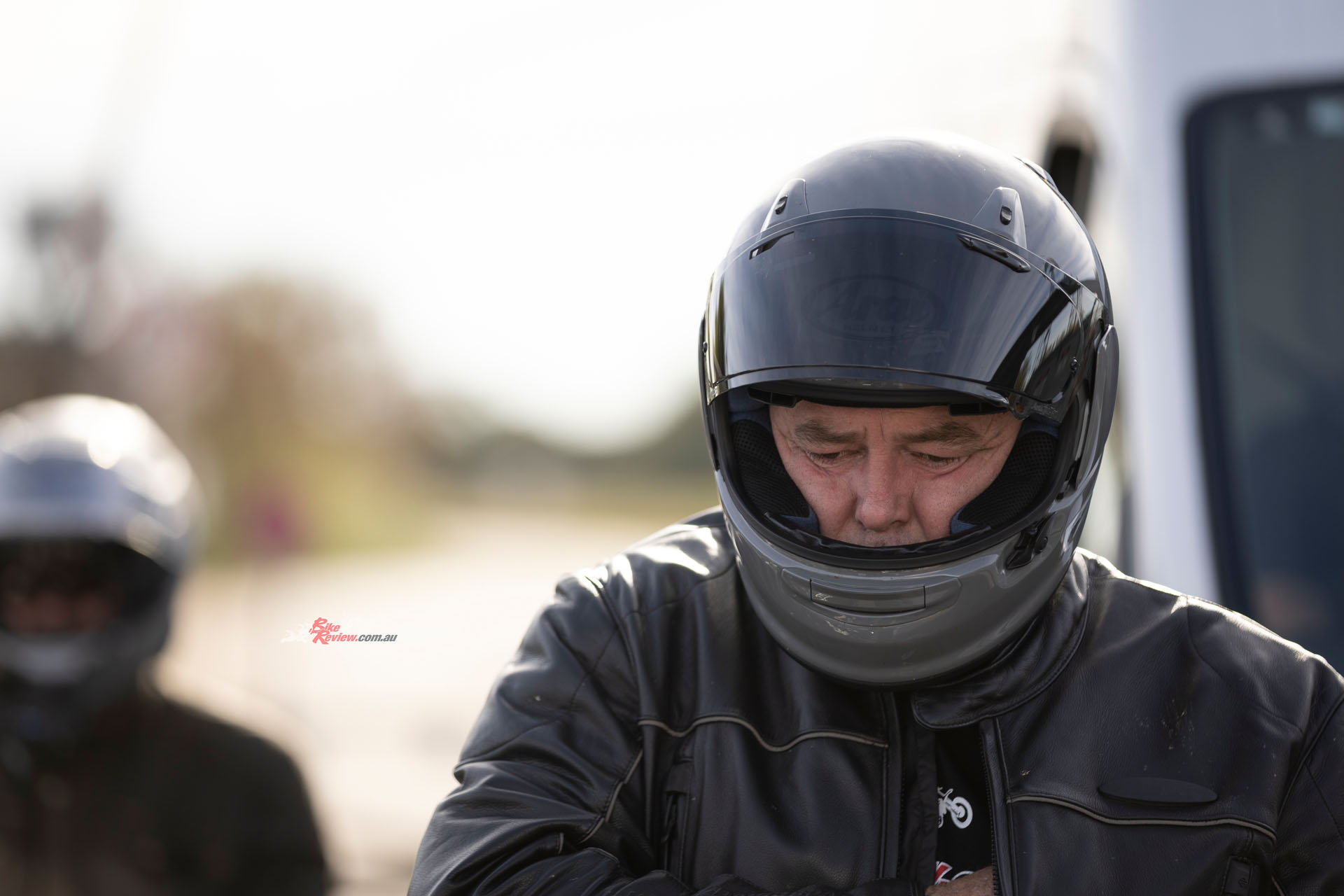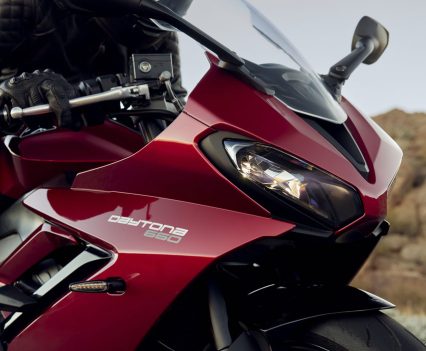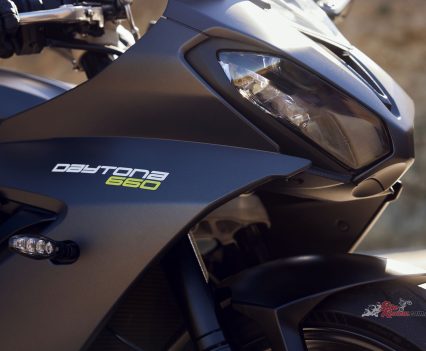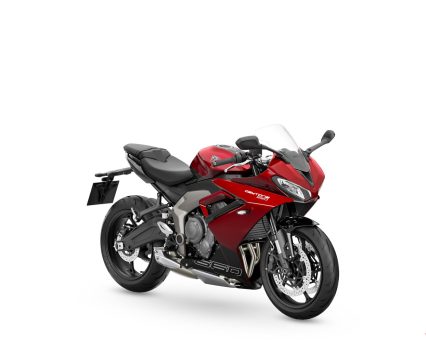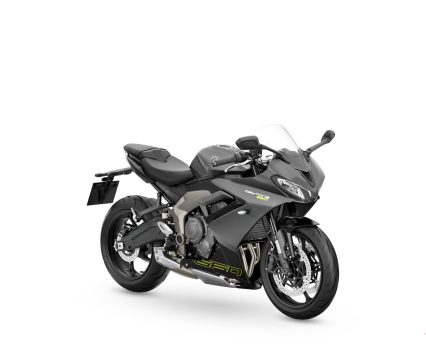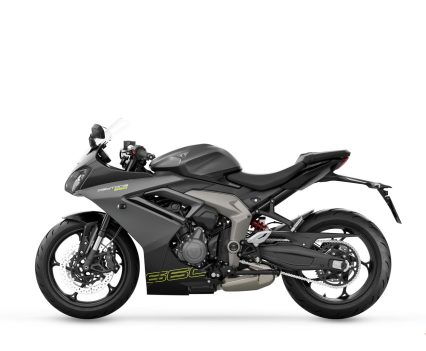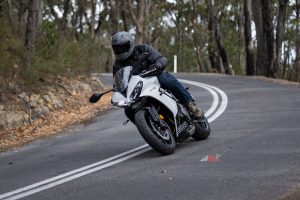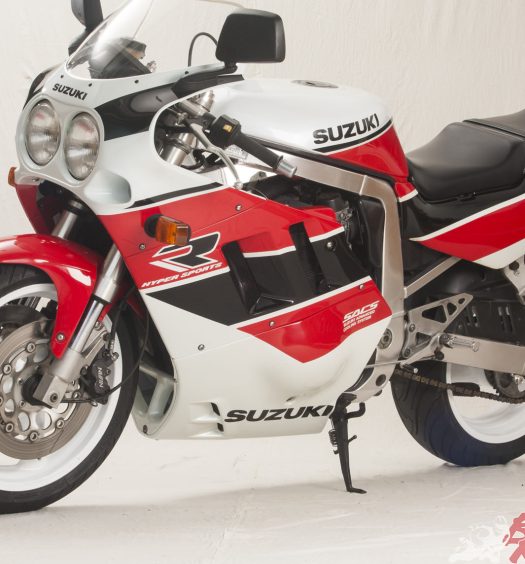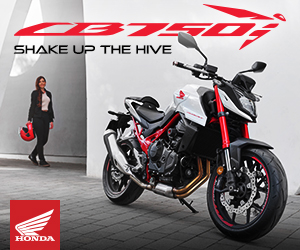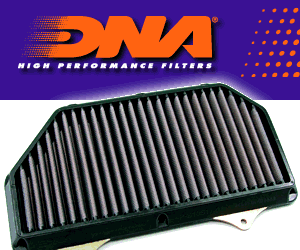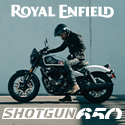Available from $14,790 R/A in Full Power and LAMS versions, the new Triumph Daytona packs great punch for price. We head to the the Adelaide Hills to see for ourselves... Photos: Dean Walters.
Triumph has just released an updated Daytona 660 in both full power and LAMS approved versions. We’ve just come back from the Australian launch in Adelaide where we spent a full day riding the Adelaide Hills and winery areas of South Australia. Here is our Daytona test.
The ride for the Daytona 660 started from The Bend motorsports complex at Tailem Bend, SA. The day before we had ridden the new Triumph Rocket 3 models from Adelaide to The Bend. Today was the return trip but with the all new Daytona 660. We had a presentation the night before on the Daytona and it went into great detail on the two new bikes with an emphasis on the torque and power deliveries of the two models. The full power model makes 95-horsepower and 69Nm. It’s the tried and true Triumph triple-cylinder engine reconfigured and updated for the 660 capacity. The LAMS Daytona 660 makes 57-horsepower and 62Nm of torque with the same three-cylinder engine and capacity.
The two models are identical to look at; both have the same bodywork, wheels, suspension, brakes and cosmetics. We couldn’t tell them apart aside from a sticker on the top of the left fork tube to help us identify which was a LAMS or Full Power model. The sticker was only put on by the local dealer for identification, there is nothing from Triumph to identify which is which. Both the Full Power and the LAMS versions come in the same three colours as well, Carnival Red, Snowdonia White, Satin Granite.
The wheel and tyre sizes are 120/70 – 17 and 180/55 – 17, front rim is 3.5in wide and the rear is 5.5in wide. I liked this, it gives the owner a wider choice of very good quality tyres in the future. The stock Michelins were very much up to the job with the riding we did. Front brakes are 310mm rotors with four-piston radial mounted calipers and braided lines, the rear brake is a 220mm fixed rotor with a single piston sliding caliper and of course ABS front and rear.
The two models are identical to look at; both have the same bodywork, wheels, suspension, brakes and cosmetics…
Suspension is by SHOWA, with the front having 41mm Separate Function Forks-big piston units with no adjustment. The rear shock is a monoshock RSU with preload adjustment only. The suspension worked fine even with my 100kg, it handled the different roads and fast corners with ease and confidence. I would like some more adjustment though, so rated the suspension at 7.5/10.

The Daytona 660 handlebars are integrated into the top triple-clamp, giving a more upright ride than a true SuperSport 600, for added road comfort.
The riding position is not as aggressive as most 600 SuperSport or 1000cc Superbikes. The ‘bars are integrated into the top triple tree, positioned at the front and above the tree. This effectively raises your hands a good 60mm higher compared to a true sportsbike. The one thing I found with this set up is the limited adjustment of the front brake in regards to rotating the lever down to give a more natural grab and feel when on the bike. The brake master-cylinder is very close to the handlebar mount and it limits the rotation, I found it a bit awkward with XXL hands.
The clutch lever has plenty of room for adjustment. The footpegs are not as aggressive as a true sportsbike, with the distance between the seat and the ‘pegs a bit more relaxed, this was good and helped to keep the legs relaxed and not over stressed at the knees and hips. Even with the restricted movement I have in my right knee and ankle I was comfortable for the full day of riding. The whole riding position is very user friendly for attacking your favourite bit of twisty road and it is very easy to tuck down out of the wind when riding fast, it’s a good compromise.
The bodywork is designed very nicely with detail work being very good. The front end is shapely and clean in design and looks fast standing still, while the short tail section with the usual taillight and number plate extension looks smart. I do like the small wings on this extension that stick out from the centre piece, they would definitely help to stop water flinging off the tyre in wet conditions coming up too high and hitting the back of the rider or pillion, a nice neat solution to the tail light assembly.
The side fairings are smart in design and offer a large vent to help keep the air flowing around the engine. The colour coding and graphics are all very nice and suit the style of the bike without being over stated, after all this is not trying to be a SuperSport or Superbike, so simpler graphics suite.
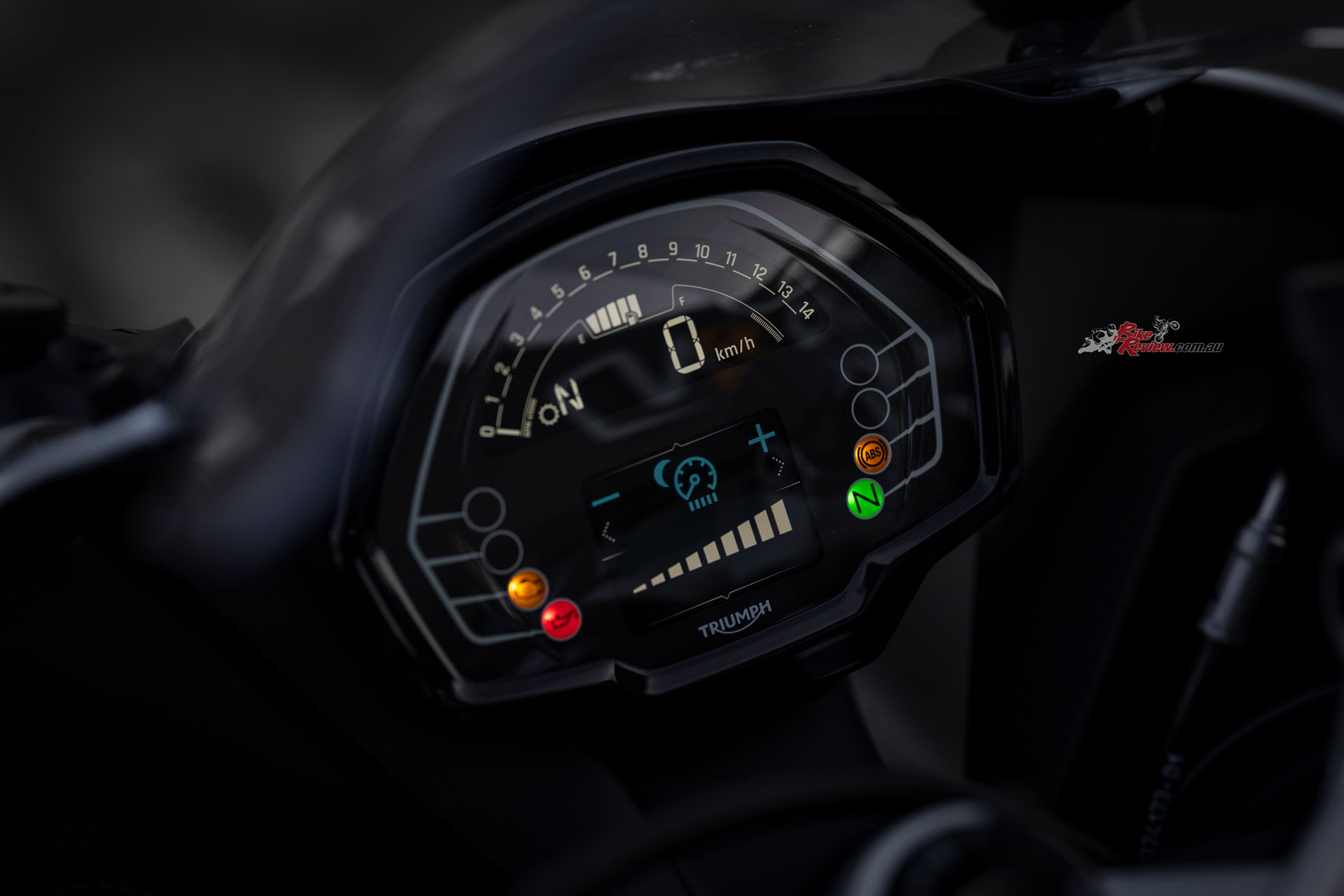
“The dash is multifunctional with colour TFT screen, it is all easy to see and use with ample information at a glance”.
The two piece seat is comfortable for a full day ride, it supported my 100kg easily. The mirrors are wide and high enough to give very good vision to the rear and adjustable enough to suite any sized rider. Some other brands could take lessons from Triumph with these mirrors. The dash is multifunctional with colour TFT screen, it is all easy to see and use with ample information at a glance. The unit is compatible with the accessory app My Triumph connectivity system that enables maps plus smartphone and music connection.
Now, the power deliveries of the two engines. The Full Power Daytona 660 with its 95-horsepower and 69Nm or torque is a beautiful sweet sounding and quick revving motor that delivers great low down pulling power and also has the horsepower to pull good speeds. It revs to over 12,000rpm with peak power at 11,250rpm. Peak torque is at 8.250rpm but it is making 80 per cent of its torque at 3150rpm! That is real strong low down grunt from the 660 triple.
“Riding the LAMS bike after jumping off the Full Power 660 was not a disappointment”…
The LAMS Daytona 660 has 57-horsepower at 6,750rpm but will still rev to over 11,000rpm, but the torque of 62Nm at 6,250rpm is massively strong for a LAMS approved motorcycle. Riding the LAMS bike after jumping off the Full Power 660 was not a disappointment. A bit of re-thinking on how to use the available torque, keeping the revs in that lovely sweet spot, had the bike propelling forward at very respectable speeds, and because it happens lower in the revs, it gave the sensation of greater torque.
It really worked very well, even at speed it wasn’t that far from the full power model. It obviously misses out at very high speeds and rpm because of the power difference but for real world riding it’s a very good engine package. As a new rider/owner the Daytona 660 LAMS bike would be the obvious and best choice for this style of motorcycle.
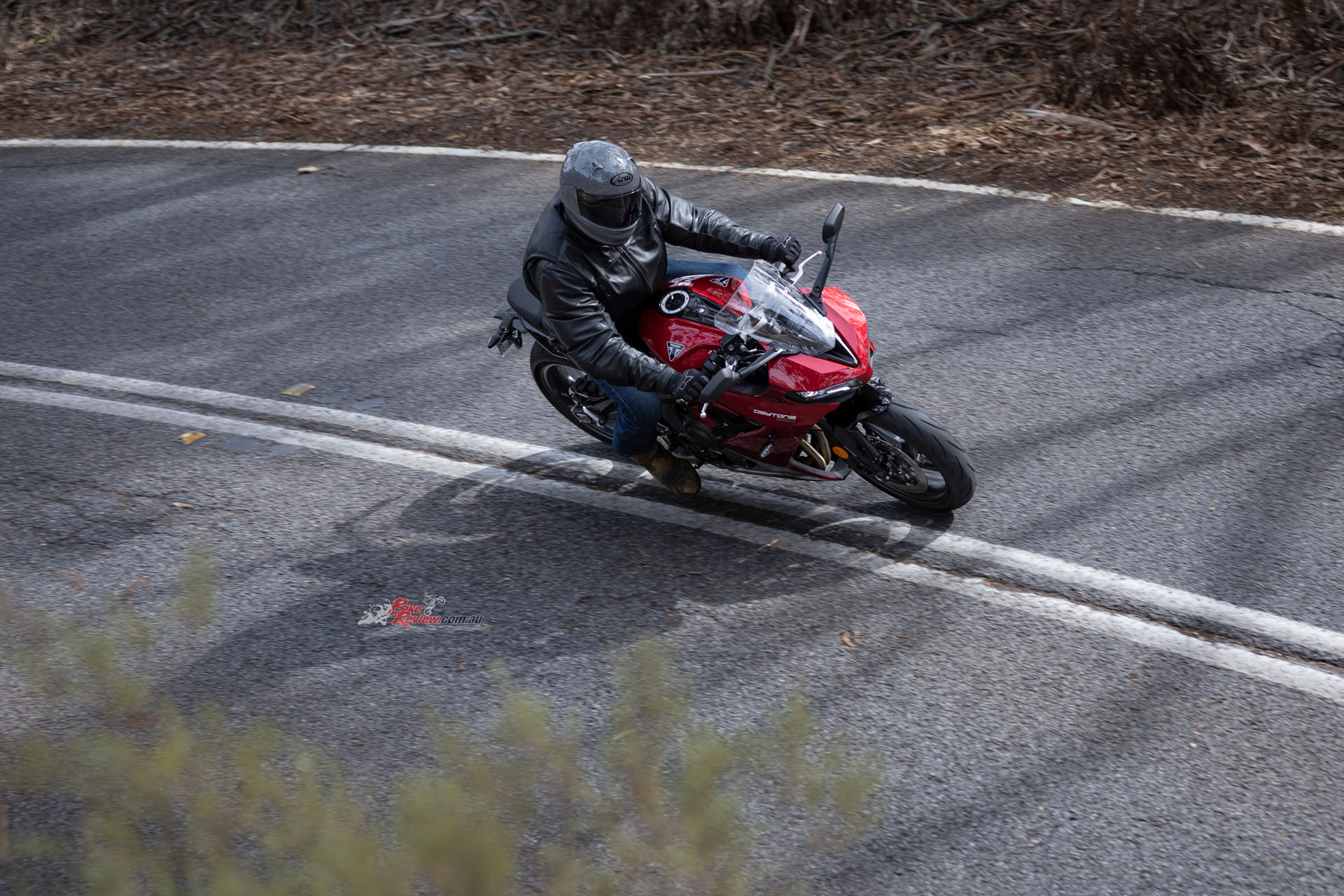
“In the twisties I do really feel that you would outperform those superbikes, as too much power is harder to use than adequate power”…
The real test of these bikes is to ride them over varying roads to really get an insight to how they both work. The days ride from The Bend back to Adelaide took in all sorts of roads from open flat highway sections to secondary roads that were still open and flat, to taking on the hills around Adelaide and McLaren Vale. Both bikes were ridden with numerous swaps to get a true feel for the two models.
“The full power Daytona 660 is real world motorcycle, it has enough power to do anything you want to on a public road”…
With both 660s being identical chassis-wise it was very easy to dial in to the bike and enjoy the ride. I left plenty of time while riding to focus on the performance of the engines while not having to consider different suspension or wheels and tyres. The full power Daytona 660 is real world motorcycle, it has enough power to do anything you want to on a public road with enthusiasm and you can still go way faster than the speed limit and lose your licence just as easy as if you were on a Superbike.
But in the twisties I do really feel that you would outperform those Superbikes, as too much power is harder to use than adequate power. You see this at track days and race meetings (I’ve been racing all of my life), most riders on their 200-horsepower superbikes can’t use all of the power, so a rider on a smaller bike that can make the most of the less horsepower can normally do faster lap times. This applies to the road as well and the full power Daytona 660 is just about perfect for most riders to get the most out of the bike and also get the most enjoyment out of riding the bike.
The LAMS Daytona 660 is an ideal learner’s model. It offers all the attributes of the full power version in every way apart from the horsepower, but it offers such great toque that it makes up for the lack of horsepower. This is a learner’s bike that the owner will learn on, but the bike will be able to satisfy that learner as his or her skills get better and their demands on the motorcycle increase, the bike will grow with them as they grow in skill and experience. I can see new owners hanging on to this LAMS Daytona 660 long after they have obtained their full licence, too.
The two Daytona 660s are a well built, usable motorcycle that have been built to a price point and an audience. They both offer great value for money and are a capable confidence inspiring motorcycle. They are for the shrewd buyer that wants quality, simplicity and value for money. The Triumph Daytona 660 falls right into this category of rider or owner. I suggest you go and test ride one.
TECH TALK 2024 TRIUMPH DAYTONA 660
Available in both LAMS and full-power variants, the Snowdonia White/Sapphire Black model is priced from $14,790 rideaway while the matt/metallic colours of Satin Granite/Satin Jet Black and Carvival Red/Sapphire Black – also available in LAMS and full-power – are priced from $14,940 rideaway.
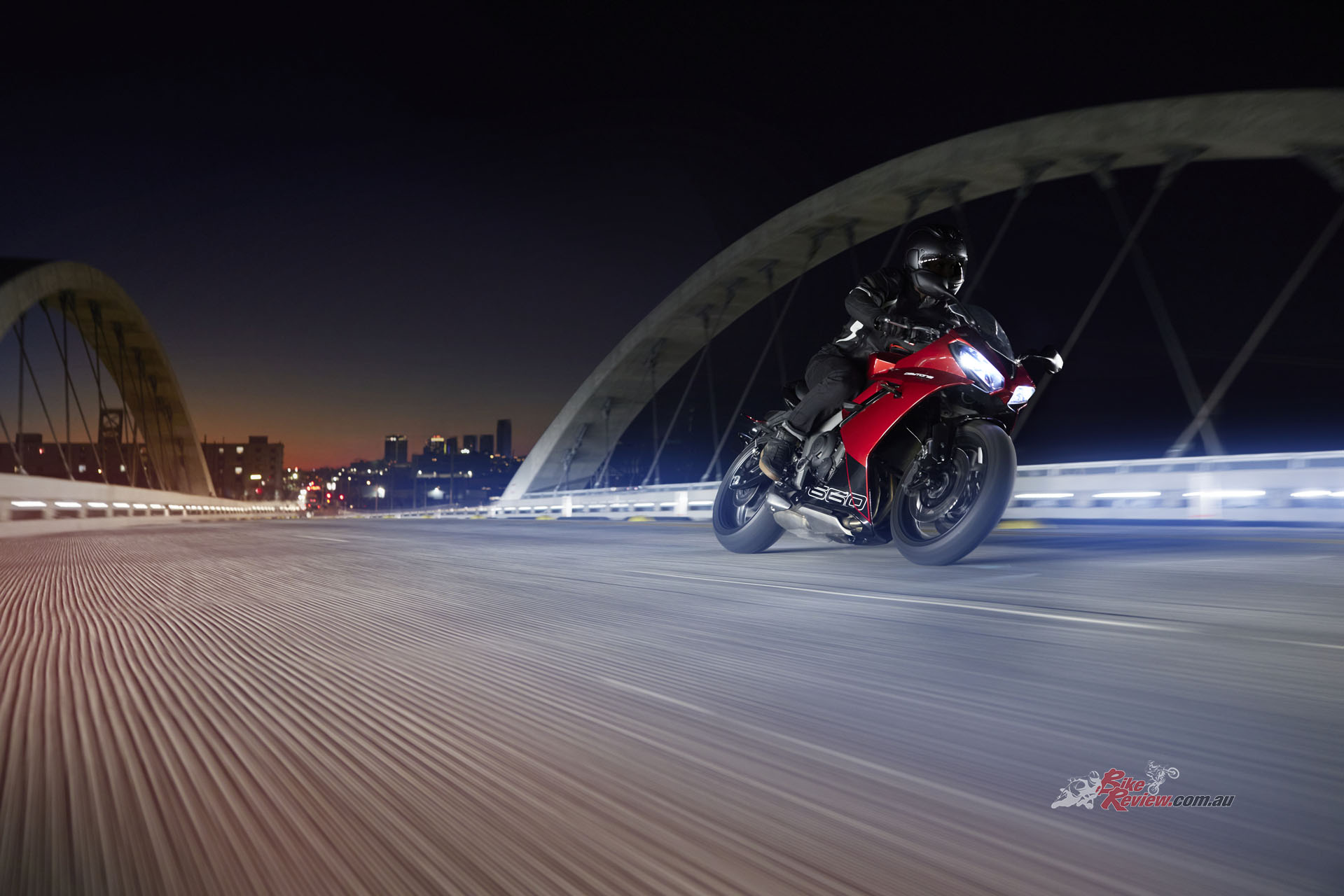
The triple delivers 95hp at 11,250rpm with a 12,650rpm redline. More than 80 per cent of torque is from 3125rpm.
The Daytona’s triple delivers 95hp@11,250rpm with a 12,650rpm redline. More than 80 per cent of its 69Nm of peak torque is available from just 3125rpm. Triumph say that by blending low-down torque and the tractability of a twin with the free-revving top end performance of an inline four, the engine has a unique triple soundtrack, further enhanced by the new exhaust which features 3-into-1 headers and a compact underslung silencer with stainless steel finisher.
Available in both LAMS and full-power variants, the Snowdonia White/Sapphire Black model is priced from $14,790 rideaway…
Power is delivered through a slick six-speed gearbox and Triumph’s Torque Assist clutch ensures a progressive, light lever action with a span optimised clutch lever for better reach. The clutch design also improves rear wheel control under hard deceleration for smooth, confident corner entry. Triumph’s Shift Assist is available as an accessory fit for fast and effortless clutch-less up and down shifts and even easier riding in town.
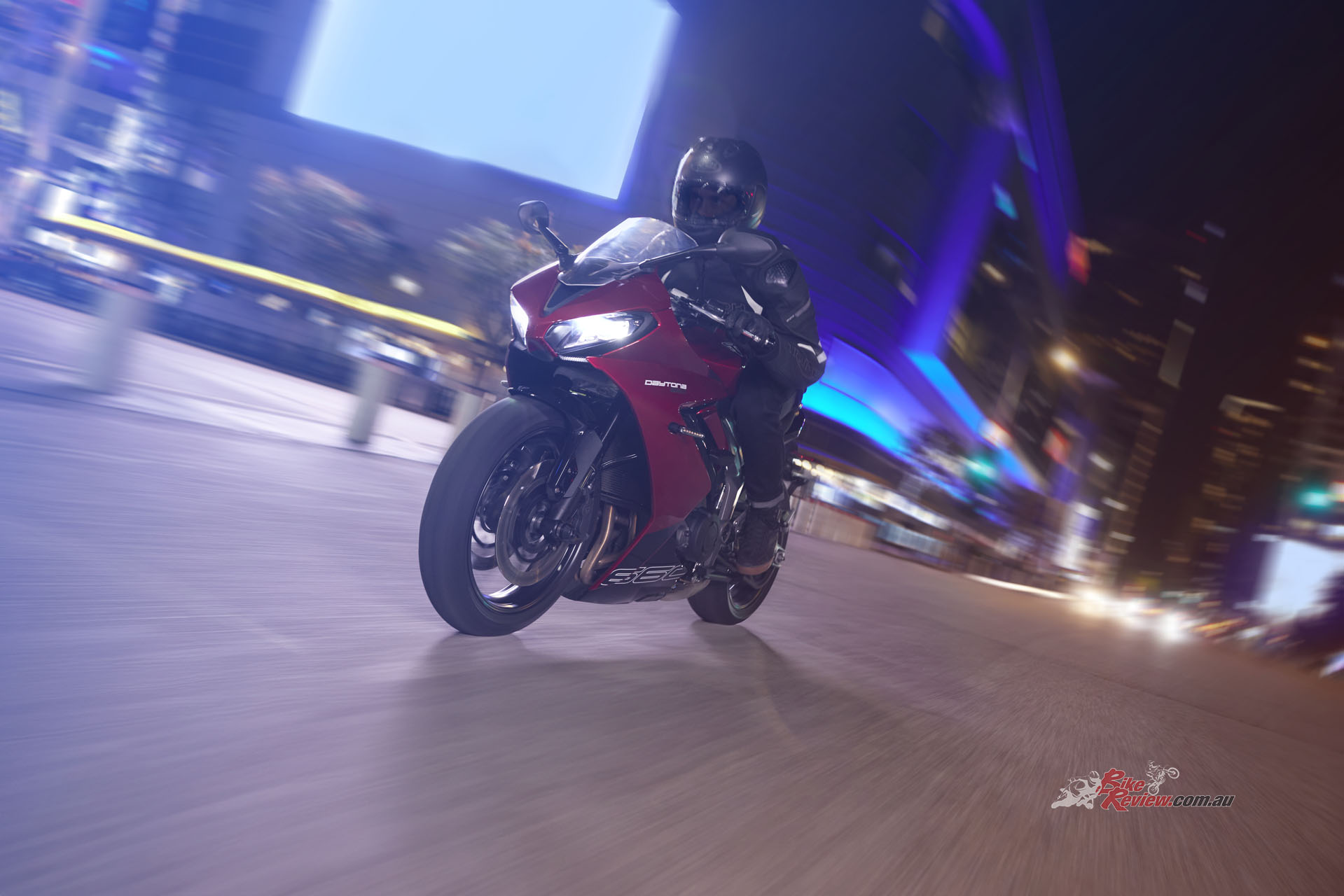
The new Daytona 660 benefits from years of race-winning chassis development. With its lightweight sports frame, top quality SHOWA 41mm upside down, big-piston forks and a SHOWA rear suspension unit.
The new Daytona 660 benefits from years of race-winning chassis development, and with its lightweight sports frame, top quality SHOWA 41mm upside down, big-piston forks and a SHOWA rear suspension unit, Triumph say it delivers an easy and agile ride. The rear suspension also features remote preload adjustment for quick set-up alterations.
Lightweight five-spoked cast aluminium wheels keep rotating mass low for even more responsive handling and enhanced suspension performance and Michelin’s new high-specification Power 6 tyres are fitted as standard to deliver confident road handling in wet and dry conditions. With twin four-piston radial calipers paired to lightweight 310mm discs and fed by braided lines, plus a Continental ABS modulator, Triumph claim the Daytona 660 has excellent stopping power and braking feel too.
The Daytona 660 is fitted with a ride-by-wire throttle and also allows for three riding modes; Sport, Road and Rain. Each mode offers a different throttle response and level of traction control intervention, with Sport mode providing the most reactive throttle response. The traction control system can also be turned off using the instrument menu.
The Daytona 660 is fitted with a ride-by-wire throttle and also allows for three riding modes; Sport, Road and Rain…
The multi-functional instruments feature a colour TFT screen integrated into a white-on-black LCD display. This neat unit is compatible with the accessory fit My Triumph Connectivity System that enables turn-by-turn navigation plus phone and music interaction.
Triumph say with racy clip-on bars positioned above the top yoke and ‘pegs placed for the optimum balance of comfort and cornering clearance, the Daytona 660’s natural riding position is perfectly judged to give the feedback needed for dynamic sports riding with space and comfort necessary for long days in the saddle.
Split rider and pillion seats, with a rider seat height of 810mm and a narrow stand-over make the Daytona 660 manageable for riders of all sizes, and an accessory low seat is also available, lowering the seat height by 25mm to just 785mm.
2024 Triumph Daytona 660 Specifications
Price: From $14,790R/A
Warranty: Two Years Unlimited KM
Colours: Carnival Red, Snowdonia White, Satin Granite
Claimed Power: 70kW@11,250rpm [41.9kW@6750rpm LAMS]
Claimed Torque: 69Nm@8250rpm [62Nm@6250rpm]
Wet Weight: 201kg
Fuel Capacity: 14L
Engine: Liquid-cooled, 12 valve, DOHC, inline three-cylinder four-stroke, 660cc, bore x stroke 74mm x 51.1mm, compression ratio 12.05:1, EFI Multipoint sequential electronic fuel injection with electronic throttle control, Stainless steel 3 into 1 header system with stainless steel silencer, wet, multi-plate clutch, six-speed gearbox.
Frame: Tubular steel perimeter frame
Rake: 23.8º Trail: 82.3mm
Suspension: SHOWA 41mm upside down separate function forks (SFF-BP) (f), 110mm travel, SHOWA monoshock RSU, 130mm travel, with preload adjustment (r).
Brakes: Four-piston radial calipers, twin 310mm discs, ABS (f) single-piston sliding caliper, single 220mm disc, ABS (r).
Wheels & Tyres: Cast alloy, 17 x 3.5in (f), Cast alloy, 17 x 5.5in (r), 120/70 – 17in (f), 180/55 – 17in (r).
Dimensions:
Wheelbase: 1425.6mm
Overall Length: 2083.8mm
Width: 736mm
Height: 1145.2mm (without mirrors)
Seat Height: 810mm
Dash & Electronics: TFT Screen with smart phone connectivity, traction control, ride modes, Blutooth connectivity, My Triumph connectibity app available for Nav, Music and more.
Ratings | Triumph Daytona 660 2024 Review


